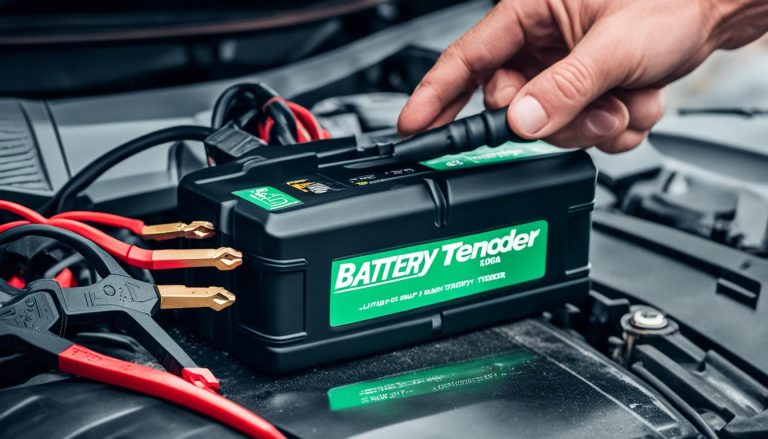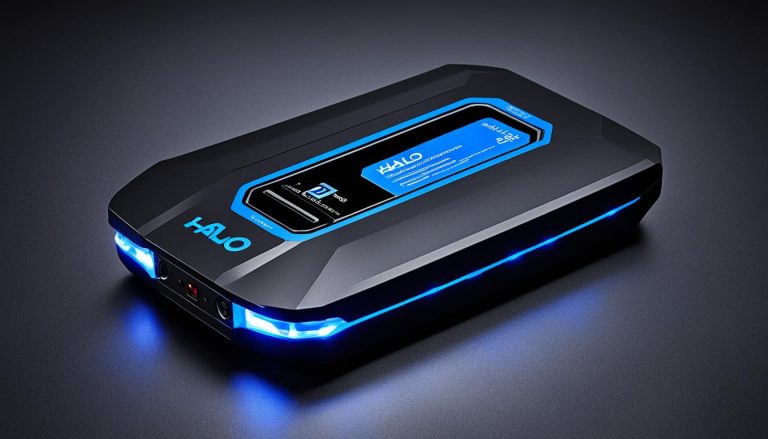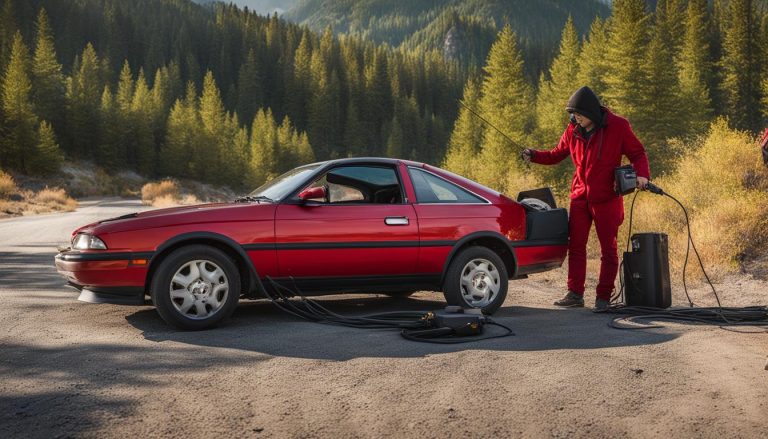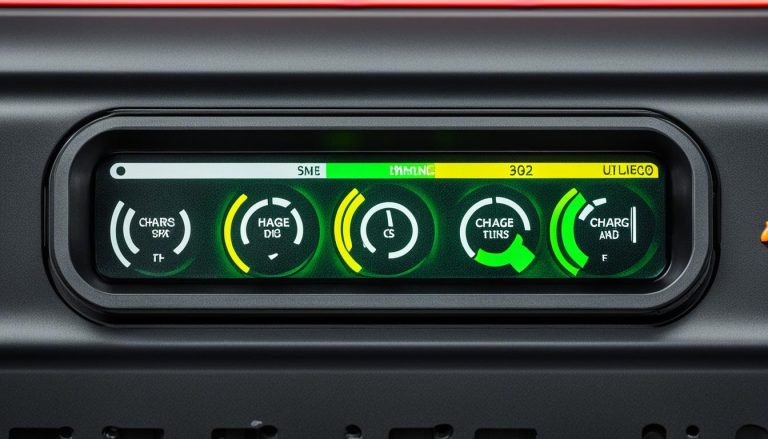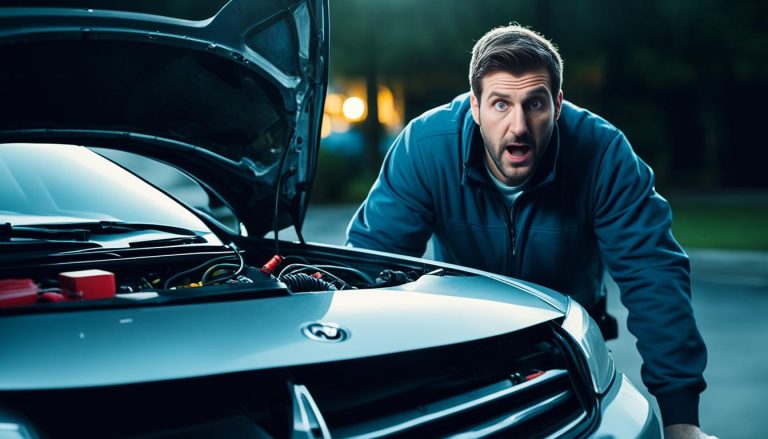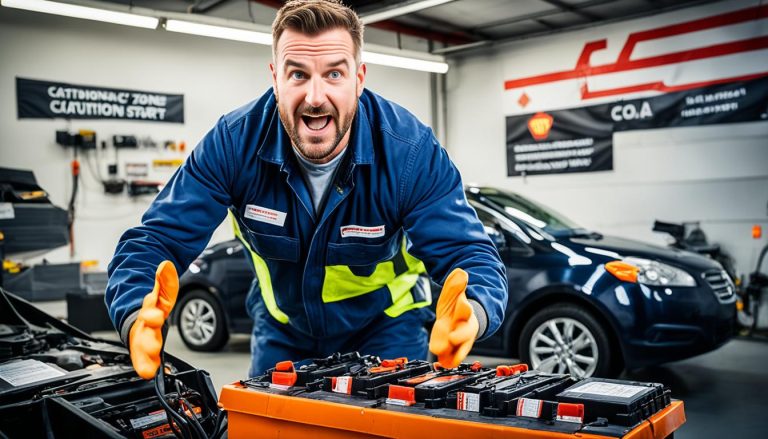Jump Start with Battery Pack – Quick & Easy Guide
batterychargers.site and its partners may earn a commission if you purchase a product through one of our links
Have you ever found yourself facing a silent engine, a dashboard that’s dark, and a car that just won’t start? Before the stress sets in, remember that a reliable emergency jump starter can be your best friend in these unexpected moments. Equipping yourself with a portable car jump starter not only ensures peace of mind but provides a swift solution to get you back on the road. In today’s guide, we’ll take you through the straightforward steps of how to jump start with a battery pack, spotlighting the convenience and efficiency of this essential roadside tool.
Whether it’s a colder-than-usual morning or a light left on overnight, your car’s battery can give in to the circumstances. However, with the right portable jump starter, such an inconvenience doesn’t have to disrupt your day. By following a few simple safety precautions and connection steps, you’ll be ready to rev up your engine within minutes. Discover the perfect balance of power and ease with options like the Micro-Start XP-1-G2 Portable Jump Starter, a favorite among motorists for its user-friendly design and versatile features.
Key Takeaways
- Understand the value of having an emergency jump starter to avoid being stranded with a dead car battery.
- Learn how a portable car jump starter can offer a quick, safe, and efficient solution in times of need.
- Familiarize yourself with necessary accessories and updated features of current jump starters like USB-C PD30w Charging.
- Recognize the importance of following a proper jump start procedure to protect your vehicle’s electronic components.
- Appreciate the simplicity of using battery packs like the Micro-Start XP-1-G2 Portable Jump Starter for a hassle-free experience.
- Ensure you know the basic safety measures, such as being aware of the correct terminal connections and clamping techniques.
Understanding the Basics of Jump Starting Your Car
When you find yourself with a dead car battery, a portable battery booster pack can be your best friend. Before you begin, it’s crucial to understand the risks and the correct steps to safely jump start your vehicle and prevent any potential damage. Jump start battery boosters have made the process straightforward while providing a layer of security for your vehicle’s electronics.
First things first: ensure you turn off all electronics and the car itself. It’s always good practice to wear protective gear, like safety glasses and gloves, to protect yourself during the process. Identify the positive and negative battery terminals—these are usually clearly marked on the battery itself.
Remember, using a car battery jump starter is especially beneficial for newer vehicles, which often have sensitive electronic components that could be damaged by traditional jump-starting methods
Next, here’s a quick guide to making the right connections:
- Connect the positive clamp of your jump starter to the positive terminal of the battery.
- Attach the negative clamp to an unpainted metal surface on your car’s frame away from the battery.
- Once the connections are secure and double-checked, power on the portable jump starter to initiate the jump start.
While using a jump start battery booster is generally safe and simple, it’s always recommended to have jumper cables on hand as a backup option. Below is a comparison of both jump-starting tools to help you understand their distinct features:
| Feature | Portable Jump Starter | Jumper Cables |
|---|---|---|
| Portability | Highly portable; no need for another vehicle | Requires another vehicle to provide charge |
| Usability | User-friendly with clear instructions | Requires basic knowledge of jump-starting procedures |
| Safety | Built-in safety features to prevent short circuits and protect electronics | Risk of sparking if not connected correctly |
| Convenience | Additional features such as USB charging ports and flashlights | Bare-bones, no extra features |
As you can see, both methods have their advantages, but the portable battery booster pack stands out for its convenience and safety, especially when you’re on the go. Next, we’ll explore key safety and maintenance tips to keep your portable jump starter ready for emergencies.
The Essential Tools: Choosing the Right Battery Pack
When you find yourself with a dead car battery, having the right jump starter for car can make the difference between a quick fix and a long wait for help. Portable jump starters and portable battery booster packs are invaluable tools that deliver peace of mind and convenience. But with various types on the market, how do you choose the best one for your needs?
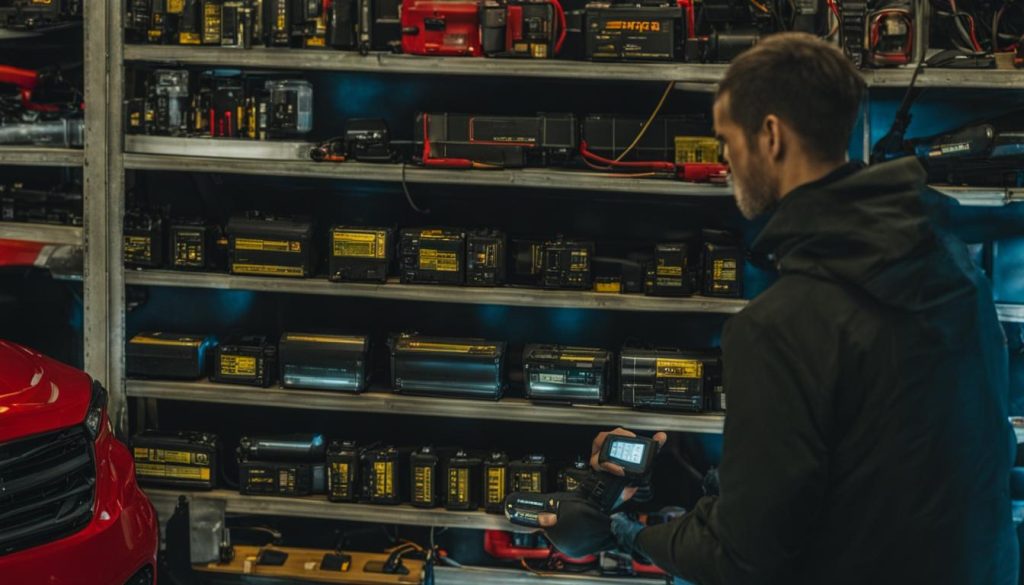
Two fundamental types of portable jump starters are commonly available: lead-acid and lithium-ion. Lead-acid versions are typically more affordable, and they’re designed to start larger vehicles; however, they tend to be bulkier. On the other hand, lithium-ion jump starters are lightweight, highly portable, and ideal for most standard vehicles due to their long lifespan.
Here’s a quick comparison to guide your decision:
| Feature | Lead-Acid Battery Pack | Lithium-Ion Battery Pack |
|---|---|---|
| Weight | Heavier, less portable | Light, highly portable |
| Price | More affordable | Higher initial investment |
| Suitability | Larger vehicles (trucks, SUVs) | Standard and compact vehicles |
| Lifespan | Shorter | Longer with more charge cycles |
| Additional Features | Possible built-in air compressor | Often includes USB ports, flashlights |
While features like built-in flashlights, USB ports, and even air compressors add value, the most crucial factor is whether the portable jump starter has the ampere capacity to match your car’s requirements. Always check the manufacturer’s specifications against your vehicle’s needs to ensure compatibility.
Remember that with a proper jump starter tailored to your vehicle, you’re not just buying a product; you’re securing a lifeline for roadside emergencies. It brings confidence to travel where you want, when you want, knowing that a dead battery won’t leave you stranded.
Preparation for a Safe Jump Start with Battery Pack
Before you consider reviving your vehicle with a jump start power pack, it’s crucial to ensure you’re fully prepared for the process. Proper preparation not only guarantees your safety but also protects your car from potential damage. Let’s guide you through the necessary steps to make sure your jump start session goes off without a hitch.
Review the Manuals: Vehicle and Battery Pack
We cannot stress enough the importance of consulting the manuals for both your car and the jump start battery pack. These manuals are treasure troves of crucial information that detail the dos and don’ts specific to your equipment. They provide instructions for correct usage, safety advisories, and troubleshooting tips — all tailored for your exact model.
Gathering Protective Equipment
Now that you’re familiar with your equipment, your next step is to suit up with the appropriate safety gear. Never underestimate the value of wearing insulated gloves and safety glasses. These simple items can offer significant protection against accidental sparks or corrosive elements while you jump start with battery pack.
Identifying Car Battery and Jumper Cable Connection Points
Locate the battery by following the guidelines laid out in your vehicle manual; it’s usually under the hood but may be placed elsewhere in some models. Once you’ve found it, identify the positive and negative terminals, as these will be the critical connection points for your jumper cables. Ensure that these terminals are clean and free from corrosion before connecting your jump start power pack.

To recap: reviewing manuals, securing safety gear, and proper identification of connection terminals are the fundamental steps that lead to a safe and successful jump start. By meticulously following these preparatory measures, you’ll be all set to breathe new life into your car’s battery, quickly and safely.
Jump Start with Battery Pack: Step-By-Step Instructions
When your car battery dies, an emergency jump starter can be a lifesaver. Here’s a simple guide for using a portable car jump starter to get your vehicle running again.
Connecting the Jumper Cables Properly
Before you begin, ensure your car ignition is off and the parking brake is set. Position the jump starter close to the battery without allowing the clamps to touch each other. Connect the positive (red) clamp to the positive terminal of your battery. Next, secure the negative (black) clamp to an unpainted metal surface on your car’s frame or engine block—this is your grounding point.
Powering the Battery Pack
With the clamps securely in place, it’s time to power up the jump starter. Ensure it’s charged beforehand for maximum effect. Simply turn on the switch or press the power button on your jump start battery pack. Some models may have a light indicator or a gauge to show that it’s ready to jump start your vehicle.
Igniting the Engine and Checking Operation
Go ahead and try to start your car. If it doesn’t start up right away, don’t worry—wait a couple of minutes and try again. Once your engine is running, switch off the jump starter before removing the clamps. It’s recommended to remove the negative clamp first, followed by the positive clamp. Now, let your engine run or take a drive to allow the battery to recharge fully.
If your vehicle doesn’t start after these steps, you may need a battery replacement. O’Reilly and other auto stores can test your battery to see if it requires changing.
| Step | Action | Notes |
|---|---|---|
| 1 | Position and Prepare Jump Starter | Ensure device is charged and clamps don’t touch. |
| 2 | Connect Clamps to Battery | Positive to positive post, negative to ground. |
| 3 | Power On Jump Starter | Turn on the device and check readiness. |
| 4 | Attempt to Start Car | Wait between attempts if necessary. |
| 5 | Remove Clamps and Recharge | Remove in reverse order; negative first, then positive. |
Maintaining Your Portable Jump Starter for Longevity
Understanding how to care for your portable jump starter is crucial in ensuring it remains reliable when you need it the most. A jump start with a battery pack is straightforward, but the upkeep isn’t always as simple as plug-and-play. By performing regular maintenance, your car battery jump starter will be ready to power up your vehicle whenever necessary. Let’s dive into some essential maintenance tips.
A well-maintained portable jump starter isn’t just about regular recharging. You must also keep an eye out for any wear and tear. Here are key steps to follow:
- Carry out monthly checks of the battery level and recharge as needed to ensure readiness.
- Inspect cables and clamps for any signs of damage, such as fraying or corrosion.
- Clean the device with a dry cloth to prevent dust build-up which can affect connections.
- Store your jump starter in a cool, dry location away from direct sunlight or extreme temperatures.
- When not in use, keep the jump starter fully charged and placed within a protective case.
- Every six months, recharge your jump starter to maintain the battery’s health and longevity.
Remember, a jump starter is only as reliable as its last charge. Never leave your jump starter uncharged for extended periods.
To give you a clearer idea of what to look for during maintenance checks, consider the following table on jump starter care:
| Monthly Maintenance Task | Reason |
|---|---|
| Battery Level Check | Ensures your battery pack has enough power to jump start when needed |
| Recharge | Maintains battery health, preventing degradation due to depletion |
| Inspect Cables and Clamps | Prevents potential failure due to damaged components |
| Clean Device | A clean connection is essential for efficient energy transfer |
| Proper Storage | Avoids damage from environmental factors like temperature and humidity |
| Protective Case Storage | Reduces risk of physical damage from knocks or drops |
By taking these steps, not only do you extend the life of your jump starter, but you also ensure the safety and operational success for when you have to jump start with a battery pack. Always keep your device in peak condition, so it can deliver that critical charge without hesitation.
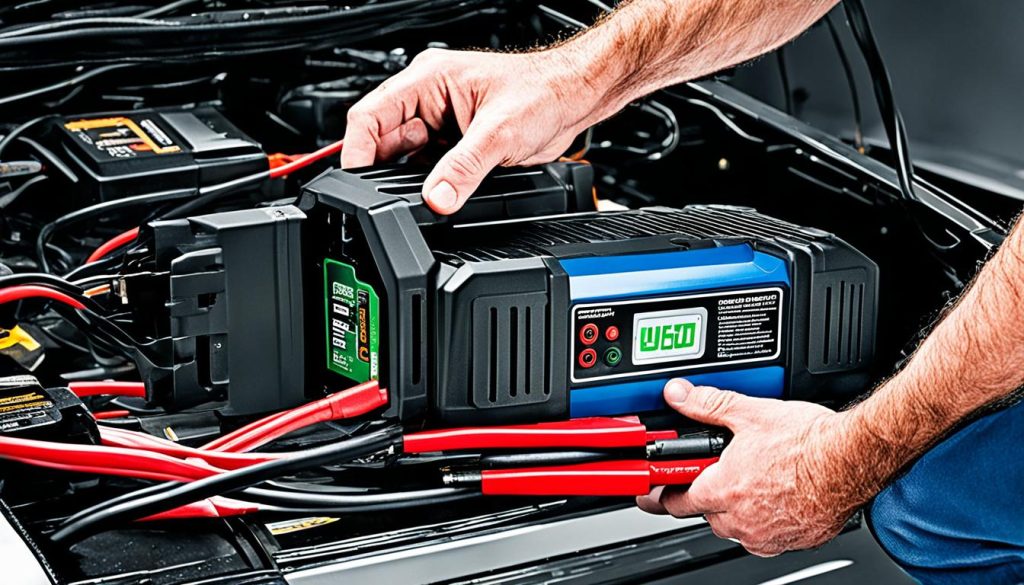
Troubleshooting Tips for Common Jump Start Issues
Experiencing complications with a jump start can be frustrating, particularly when you’re in a rush. Here’s how you can troubleshoot some common issues to get back on the road without delay.
Addressing Failure to Start After Jumping
If your attempt to jump start with a battery pack doesn’t get your engine running, first inspect if the jump starter for your car is fully charged. Verifying this ensures that the power supply is sufficient. Next, double-check the connections. Loose or improperly connected clamps can impede the current flow necessary to start your vehicle.
Ensuring Proper Connection and Polarity
For a jump start battery booster to work effectively, the clamps must match the corresponding battery terminals—positive to positive and negative to a solid ground on the engine or chassis. Incorrect hook-ups can lead to a no-start situation or even damage the electrical systems of your car.
Jump Starter Care to Prevent Malfunctions
Regular care and maintenance of your jump starter will prevent common malfunctions. Storing your device in a clean, dry space and ensuring regular charging are fundamental habits for long-lasting performance and readiness.
Here’s a simple table to help you quickly identify and resolve some usual issues:
| Problem | Possible Reason | Solution |
|---|---|---|
| Car won’t start | Dead battery or faulty jump starter | Charge jump starter, check battery, and retry |
| Poor connection | Clamps not secured | Reattach clamps to battery terminals |
| Sparks or no current | Reverse polarity | Verify clamp connections to correct polarity |
| Jump starter won’t charge | Charger malfunction | Test charger and cables; replace if necessary |
Keep this guide handy to ensure that when you’re using your jump start with battery pack, or any jump starter for car emergencies, you’re ready to overcome hurdles with confidence.
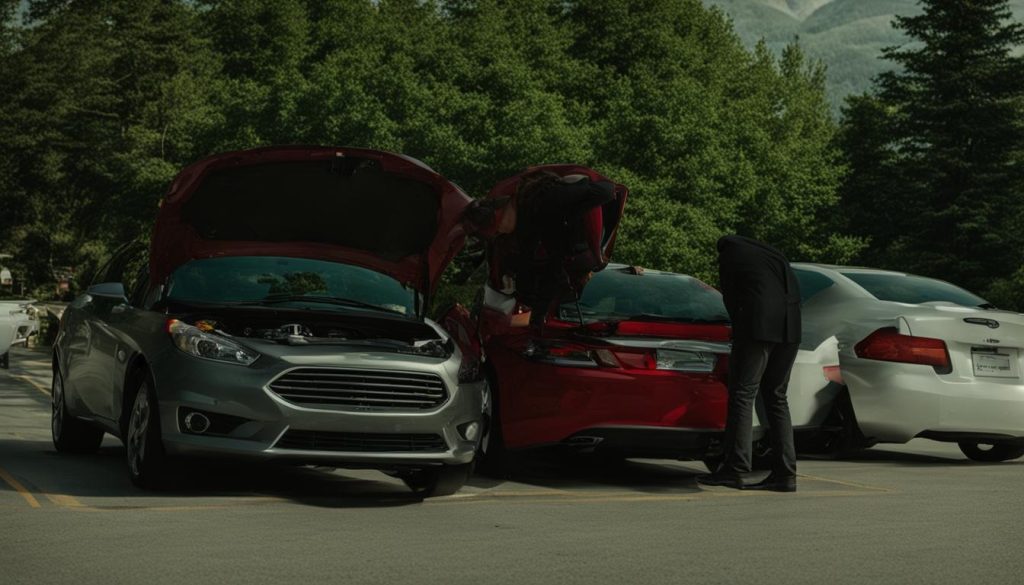
When to Use a Jump Start Battery Pack vs Traditional Methods
In the ever-evolving landscape of automotive technology, deciding between a jump start with battery pack and the use of traditional jumper cables can be crucial in safeguarding your vehicle’s integrity. While jumper cables have been the quintessential tool for battery revival, portable jump starters are becoming the go-to for a swift and secure power boost, particularly for modern vehicles equipped with intricate electronic systems.
Advantages of a Portable Battery Booster Pack
A portable car jump starter shines in its convenience and innovative features. These compact devices are designed not only to jump-start your engine but also come with additional functionalities like emergency lighting and the ability to charge personal devices through built-in USB ports. Their self-contained nature means you’re not reliant on another vehicle for a jump, providing peace of mind when you’re on the road alone.
Jump Starting Modern Vehicles with Sensitive Electronics
Modern cars are often laden with sensitive electronics that are easily jeopardized by voltage spikes during a traditional jump start. A jump start battery pack meticulously controls the energy flow, ensuring your vehicle’s electronic components remain unscathed. These battery packs are especially designed with safety protocols to prevent overcharging and short-circuiting, making them a smart choice for today’s digitally-dependent automobiles.
Why Having Both a Booster Pack and Jumper Cables Is Prudent
Despite the rising prominence of portable battery boosters, having a set of jumper cables in your trunk remains a wise strategy. They serve as a backup in scenarios where your jump starter may be discharged. Balancing the best of both worlds equips you with a well-rounded approach to handling battery troubles, ensuring that you are prepared for any circumstance that comes your way.
FAQ
How do I jump start my car with a battery pack?
To jump start your car with a battery pack, first make sure your portable car jump starter is fully charged. Turn off your car’s ignition and remove the keys. Connect the positive clamp to your car’s positive battery terminal and the negative clamp to a grounded metal component on your vehicle. Turn on the jump starter, then attempt to start your vehicle. If successful, turn off the jump starter, disconnect the clamps starting with the negative one, then the positive, and let your car run to charge the battery.
What should I look for in a good portable battery booster pack?
When selecting a jump starter for your car, look for one with enough power to start your specific vehicle—measured in amps. Consider whether you want a lead-acid or lithium-ion battery, and check for additional features such as USB ports, built-in flashlights, or air compressors. Portability, ease of use, and safety features like spark-proof clamps and reverse polarity protection are also essential factors.
What are the safety precautions to take when using a portable jump starter?
Always review your jump start power pack’s manual and your vehicle’s manual before attempting a jump start. Wear safety glasses and gloves to protect yourself, and ensure your portable jump starter is charged and in good working condition. Never touch the clamps together, and make sure to connect them correctly—positive to positive and negative to grounded metal. Start the car within the jump starter’s operating guidelines, and keep flammable materials away from the battery.
How often should I maintain my portable jump starter?
You should regularly check the charge level of your portable jump starter, typically once a month, and recharge it as needed. Inspect the cables and clamps for any wear or damage, keep the unit clean and dry, and store it in a cool, dry place away from extreme temperatures. Additionally, you should recharge your jump starter every six months if not used, to help ensure it has the power necessary for an emergency jump starter situation.
What should I do if my car won’t start after using a jump starter?
If your car doesn’t start after using a jump start battery booster, verify that the jump starter is fully charged and that the connections are secure and correctly placed: positive to positive and negative to a grounding point. If the car still won’t start, there may be an issue with your car battery or an underlying mechanical problem that should be checked by a professional.
Why should I have both a portable jump starter and traditional jumper cables?
Having both provides a layer of redundancy. A portable jump starter allows you to jump start your car without the need for another vehicle, making it convenient and efficient, especially if you’re in a remote area. Traditional jumper cables require another car, but they’re useful if your jump starter is out of power or if you need to help another motorist. Being prepared with both ensures you can handle a variety of situations when you need to jump start your vehicle.
Can a jump starter damage my car’s electronics?
Modern jump starters are designed with safety features to prevent damage to your car’s electronics. However, it’s crucial to use the jump start battery pack correctly. Always make sure that the jump starter is off when connecting the clamps, and only turn it on once the clamps are properly attached. Follow the manual carefully and if you’re unsure about the process, seek professional assistance.
How do I maintain my car battery to prevent needing frequent jump starts?
To maintain your car battery and reduce the likelihood of needing frequent jump starts, keep your battery clean and check the electrolyte levels if it’s not a maintenance-free battery. Drive your vehicle regularly to keep the battery charged, and if you’re not using your car for an extended period, consider a trickle charger to maintain the battery’s charge. Regularly inspecting your charging system can also help prevent battery issues.

